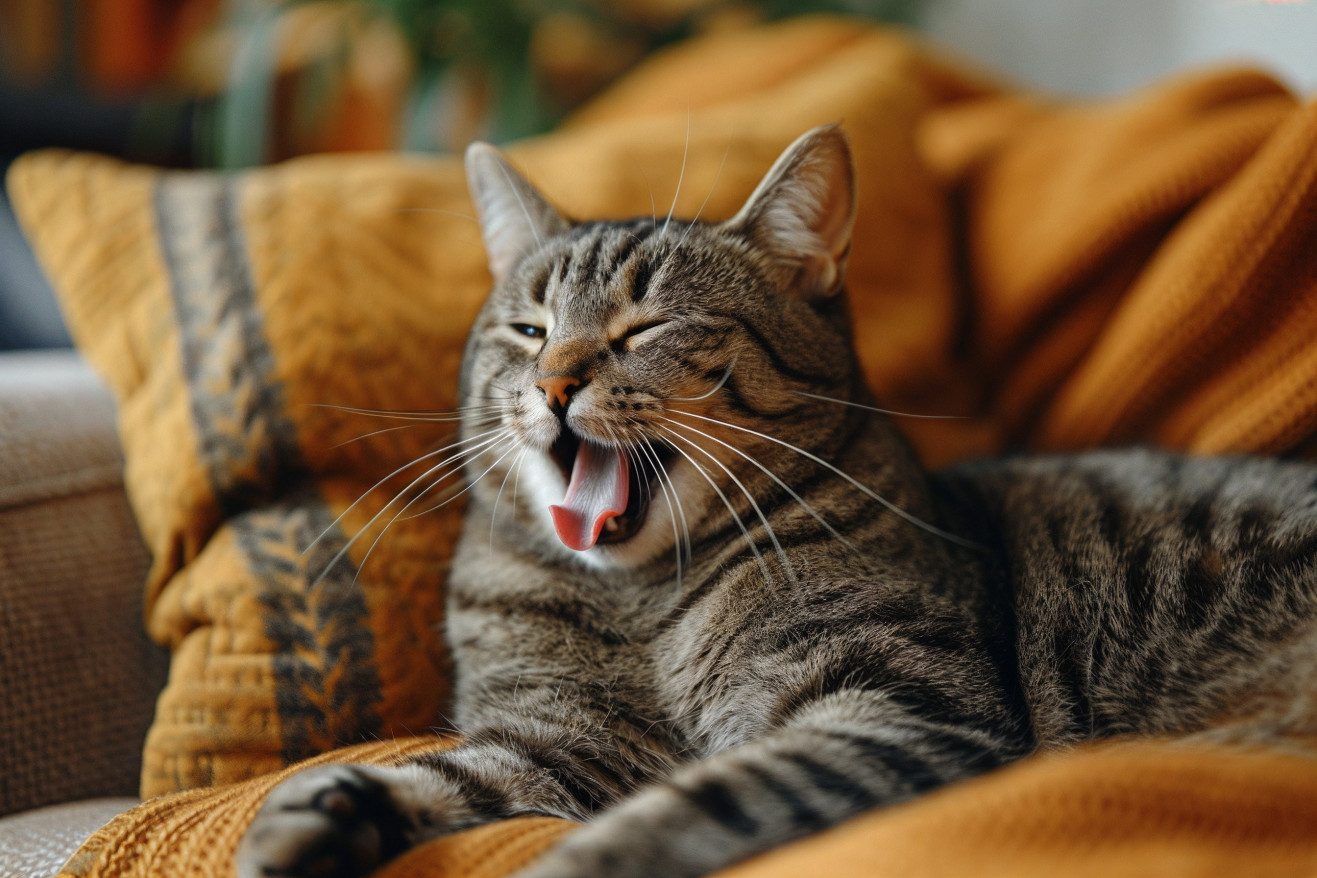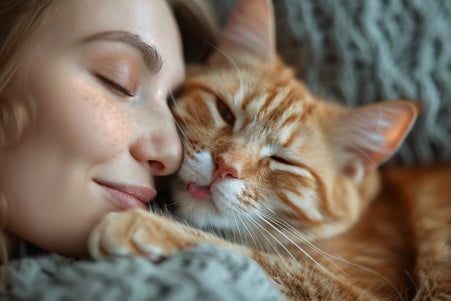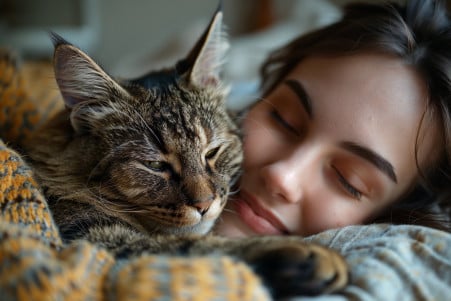Why Do Cats Blep? The Science Behind This Adorable Behavior
13 February 2024 • Updated 12 February 2024

If you’ve ever seen a cat blep, you know it’s one of the most adorable things a cat can do. Cats blep due to ‘blepping,’ which happens during grooming or when they’re smelling something. However, there are also medical reasons for blepping, including periodontal disease. Cats also use the Flehmen Response to process pheromones. If you’re concerned about your cat’s blepping, talk to your vet to rule out any medical issues.
To get to the bottom of this adorable yet mysterious cat behavior, we’ve gathered information from veterinarians, animal behaviorists, and researchers who have studied the topic. We’ll cover the many reasons cats blep, from the most common causes like grooming and scent analysis to the more serious causes like periodontal disease. Knowing why your cat bleps can help you better understand and care for your furry friend.
Why do cats stick their tongue out?
What Is ‘Blepping’? A Sign of Grooming Behavior
The term ‘blepping’ was originally coined to describe the behavior of a cat sticking out just the tip of its tongue in a seemingly absent-minded way. This strange behavior often happens when a cat is grooming itself.
As cat behavior expert Dr. Mikel Maria Delgado explained in an interview with Yahoo, cats are often grooming when they become distracted by a sound, movement, or change in their environment. They stop grooming, but their tongue is left sticking out, creating an adorable and amusing expression of curiosity.
Although ‘blepping’ may seem strange, experts say it’s usually nothing to worry about. It’s a sign that a cat is deeply focused but easily distracted.
In addition, Dr. Delgado says that ‘blepping’ can also be a sign that a cat is comfortable, feeling safe and secure, and even that they are exploring and experiencing the scents and tastes of their environment.
This funny and endearing behavior that cat lovers love so much is an expression of a cat’s curiosity and comfort, and while it’s harmless, it’s always important to consider it in the context of a cat’s overall health and behavior.
The Flehmen Response: A Sensory Mechanism
When a cat snarls by lifting its lips, it is not showing distaste but instead performing the Flehmen Response, an advanced behavioral mechanism for scent assessment.
As explained by PetMD, the Flehmen Response involves a cat opening its mouth and lifting its upper lip to allow air to pass over the vomeronasal organ (VNO), also called Jacobson’s organ. Situated at the bottom of the nasal cavity, the VNO interprets pheromones and hormones, serving as a sensory conduit between the sense of smell and the brain.
The Flehmen Response, which involves a distinctive facial expression and tongue movement, is how cats sample the chemical information in their environment.
ScienceDirect notes that the Flehmen Response is an intentional behavior that enables cats to detect pheromones that are important for social interactions, marking their territory, and reproduction.
According to PetHelpful, the Flehmen Response is a natural and necessary part of a cat’s sensory experience and should not be stigmatized even though it looks like a snarl. Knowing what the Flehmen Response is helps to show how complex cats’ ways of communicating are and helps us better understand the sophisticated biological engineering of a cat’s tongue.
The Cat Tongue: An Evolutionary Work of Art
The cat tongue is an evolutionary masterpiece that is perfectly designed to perform a number of tasks that are critical to a cat’s survival and daily life. According to National Geographic, the tongue’s surface is covered in tiny, backward-facing spines called papillae, which are shaped like a scoop.
This design allows the cat’s tongue to groom itself. The papillae pick up saliva from the mouth and deposit it on the fur, which cleans the cat and helps it cool down by allowing the saliva to evaporate.
A study published in PubMed notes that the tongue’s complex movements in the intake of solid food can be separated into mastication and transport to the pharynx. The same unique movements, especially the rhythmic extensions during ‘blepping,’ can lead to the tongue being pushed out of the mouth.
In addition, a study in PubMed found that the cat tongue has around 250 fungiform papillae, which contain taste buds that are most densely packed toward the back of the tongue. This could indicate a relationship between the papillae’s density and the cat’s sensory functions, including what their tongue looks like during different activities.
These studies come together to help explain why cats stick out their tongues, a behavior that is rooted in the anatomical features that help cats groom themselves, eat, and explore their world through their senses. While ‘blepping’ may be cute, the real wonder is in the biological complexity that underlies it, and this complexity is worth paying close attention to, especially when it may signal a health issue.
What to Look For: When a Cat’s Tongue Indicates a Medical Problem
While ‘blepping’ and the Flehmen Response are harmless aspects of your cat’s behavior, a protruding tongue can sometimes be a red flag signaling health issues. A cat with periodontal disease, a prevalent oral health concern, may show symptoms like a persistently sticking out tongue. TahoeDailyTribune states that this may also be accompanied by other alarming signs, such as pawing at the mouth, drooling, or refusing to eat.
Both TheCatSite.com and PetMD note that stomatitis and oral tumors can also cause a cat to stick its tongue out. Symptoms can include blood in the saliva, decreased appetite, difficulty eating, or resistance to their usual food. If your cat experiences pain, lethargy, or weight loss, PetMD suggests that an underlying oral mass could be the cause.
It’s important to keep an eye on your cat for any other signs of distress or illness that may be present with these symptoms. Make sure to take your cat to the vet if you notice any changes in their behavior or health, as catching any issues early can be key.
This will also help you know when to be concerned and when to chalk it up to ‘blepping’ or the Flehmen Response, allowing you to keep your pet safe and healthy.
What It Means When Cats Stick Out Their Tongues
The seemingly simple act of a cat sticking out its tongue, while sometimes cute and sometimes confusing, can be explained by a number of things. Cats “blep” as a part of grooming or when they’re in a state of relaxed curiosity, so it’s a normal behavior.
The Flehmen Response is an example of how cats use their highly sensitive sense of taste and smell. On the other hand, dental disease or stomatitis may cause cats to stick out their tongues in a way that looks like blepping, and these conditions are often accompanied by other symptoms.
As we explore the ins and outs of our cats’ tongues, we learn that paying attention to these details is more than just a fun hobby—it’s an important part of making sure our cats are healthy and happy. We urge cat parents to pay attention to their cats’ behaviors in the context of their overall health, and to remember that even the quirkiest of behaviors may be a sign of a problem.
Knowing the ins and outs of cat behavior, including why cats stick out their tongues, is important for making sure our cats are as healthy as they can be, and it helps us give them the best care and attention possible. If you’re ever in doubt about your cat’s health, be sure to contact your vet, and keep watching your cat’s fascinating behaviors with a well-informed, loving eye.


